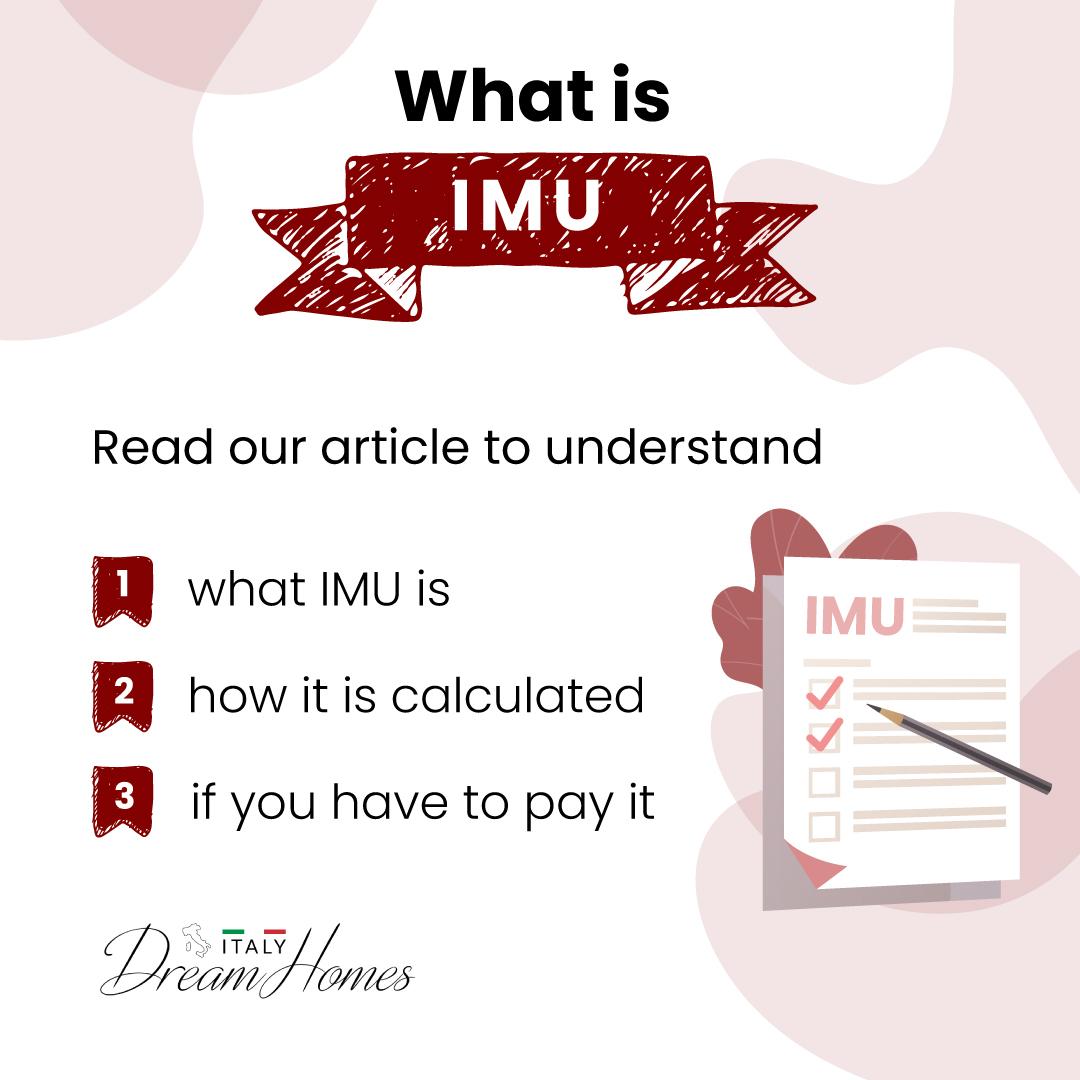What is IMU? How is it calculated? Who has to pay it? In this article, we try to answer all these questions in a simple way.
What is IMU?
IMU stands for ‘Imposta Municipale Unica’. It is a tax that applies to the ownership of real estate – residential, commercial, industrial and undeveloped land – located in the territory of an Italian municipality.
IMU tax must be paid twice a year, in June and December. The amount to be paid varies according to the type of property, its location and its cadastral value.
How IMU is calculated: cadastral value, cadastral income and cadastral coefficient
IMU is calculated by applying a percentage – the rate set by the local authority ranging from 0.2 % to 0.76 % – to the cadastral value of the property. To obtain the cadastral value, you need to know the cadastral income and the cadastral coefficient.
But let us take a step back and see what cadastral value, cadastral income and cadastral coefficient are.
Cadastral value
The cadastral value of a property is used to calculate the taxes due for the possession (IMU), purchase, donation or inheritance of a property. In other words, the cadastral value constitutes the taxable amount to which the tax rate will be applied.
Here’s the formula to calculate the cadastral value:
Cadastral income + 5% x Cadastral Coefficient
Cadastral Income
The cadastral income is the income produced by a property. Usually, the cadastral income is contained in the cadastral certificate, which can be requested online or at the relevant territorial office of the Revenue Agency.
Cadastral categories and cadastral coefficient
There are six cadastral categories and they are indicated by the first six letters of the alphabet: A, B, C, D, E, F. Category A, for example, covers dwellings and vehicle premises; category B includes buildings for collective use; while category C covers commercial buildings such as shops, warehouses and workshops. Each category contains a fixed coefficient – the cadastral coefficient – established by law.
Who has to pay IMU?
It is important to note that some properties are exempt from IMU tax, such as the taxpayer’s main residence. Therefore, you do not have to pay IMU on the house where your residence is registered.
There are other cases where you do not have to pay IMU; for example, for certain properties used for specific purposes, such as places of worship or public housing.
However, rules and exemptions may vary depending on the municipality, so it is always a good idea to check with your local tax authorities for specific information on your property.
We hope you found this article useful.
Follow us on social media: lots of useful information on buying second homes in Italy, news about events in Lunigiana and Val di Magra, and curiosities about our wonderful territory.







 150Sq.m
150Sq.m























































